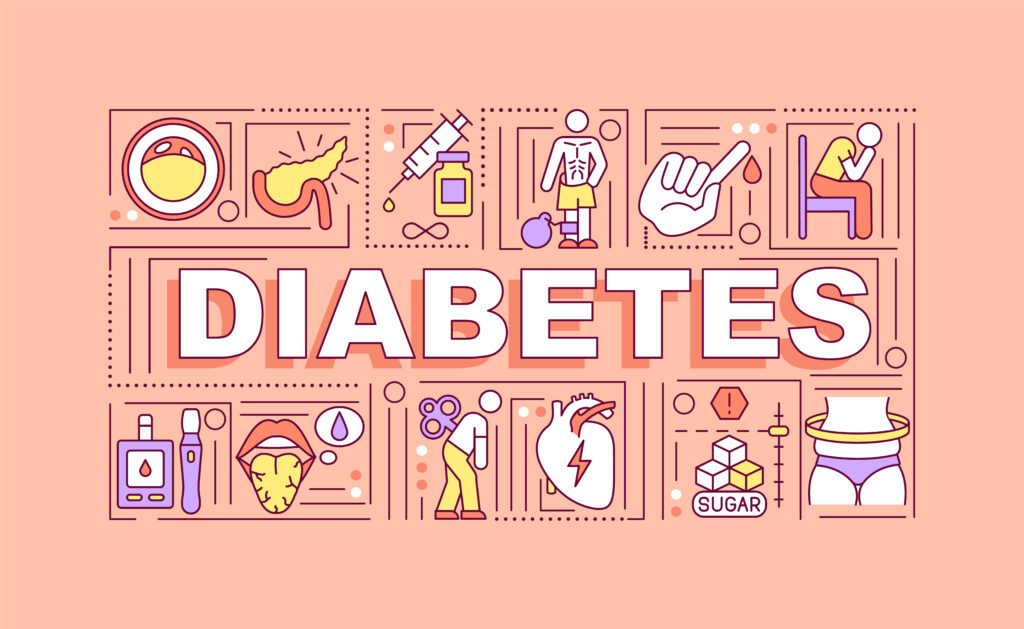
Introduction
Diabetes is a prevalent health condition affecting millions. Understanding its types and recognising symptoms is crucial for early detection and effective management.
Diabetes presents a significant health challenge, impacting individuals across all age groups. The condition disrupts the body’s ability to regulate blood sugar levels, leading to complications if left unmanaged. There are primarily two types of diabetes: Type 1 and Type 2.
Types of Diabetes
Type 1 Diabetes
Type 1 diabetes, although less common, is primarily diagnosed during childhood or adolescence. In this type, the immune system attacks the pancreas, hindering insulin production, the hormone responsible for regulating blood sugar. Individuals with Type 1 diabetes require insulin injections to manage their condition.
Type 2 Diabetes
Type 2 diabetes is more prevalent and is often linked to lifestyle factors like poor diet, lack of exercise, and obesity. In this type, the body becomes resistant to insulin or fails to produce enough insulin to maintain normal glucose levels. Lifestyle modifications and medication are key to managing Type 2 diabetes.
Symptoms of Diabetes
Common Symptoms
1. Frequent Urination: Individuals might experience increased urges to urinate, especially at night.
2. Excessive Thirst: Constant feelings of thirst despite drinking adequate fluids.
3. Unexplained Weight Loss: Unexpected weight loss despite regular eating habits.
4. Fatigue and Weakness: Feeling excessively tired or weak, often due to cells not getting enough glucose for energy.
5. Blurry Vision: Diabetes can affect vision, causing blurriness or difficulty focusing.
Other Symptoms
1. Slow Healing Wounds: Injuries or wounds take longer to heal in diabetic individuals.
2. Tingling Sensations: Numbness or tingling in the hands or feet could indicate nerve damage.
3. Recurrent Infections: High blood sugar weakens the immune system, leading to frequent infections.
Diagnosis and Management Of Diabetes
Early diagnosis is crucial for effective management. Clinicians use blood tests measuring glucose levels to diagnose diabetes. Once diagnosed, managing the condition involves a combination of lifestyle changes, tablets, and, in some cases, insulin therapy.
Lifestyle Modifications
– Dietary Changes: Emphasizing a balanced diet, low in sugars and carbohydrates, helps manage blood sugar levels.
– Regular Exercise: Physical activity helps control weight and improves insulin sensitivity.
Medication and Insulin Therapy
– Oral Medications: Most individuals, especially those with type 2 diabetes, require oral medications to regulate blood sugar.
– Insulin Injections: People with Type 1 diabetes and some with Type 2 diabetes need insulin therapy to help regulate their blood sugar.
Conclusion
Understanding the types and symptoms of diabetes is vital to recognise the condition early and seek timely medical intervention. Lifestyle modifications, regular screenings, and access to proper healthcare facilities are crucial in managing diabetes and reducing its impact on individuals and communities.
References:
Ogbera AO, Ekpebegh C. Diabetes mellitus in Nigeria: The past, present and future. World J Diabetes. 2014;5(6):905-911. doi:10.4239/wjd.v5.i6.905
Unadike BC, Eregie A, Ohwovoriole AE. Prevalence of Diabetes Mellitus in a Group of Women attending “August” Meeting in a Rural Community in Nigeria. Ann Afr Med. 2011;10(1):71-75. doi:10.4103/1596-3519.76575
Ogbera AO, Chinenye S, Onyekwere A, et al. Prognostic indices of diabetes mortality. Ethn Dis. 2007;17(4):721-725.
